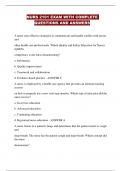Samenvatting
Summary Molecular Principles of development
- Instelling
- Radboud Universiteit Nijmegen (RU)
Summary of the course principles of molecular biology. Information collected from the lectures, Q&A's, Computer practicals and book 'Principles of Development'.
[Meer zien]















